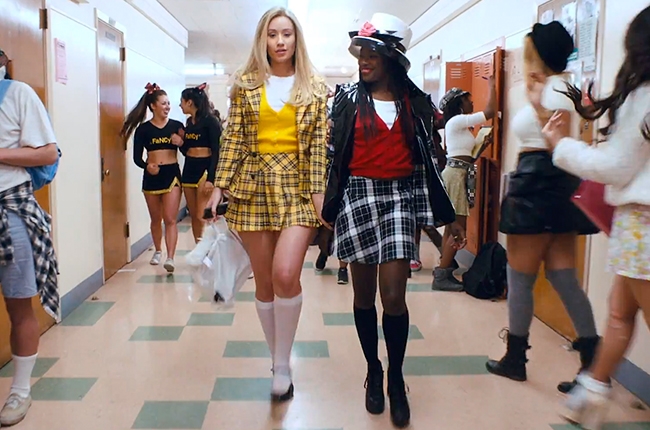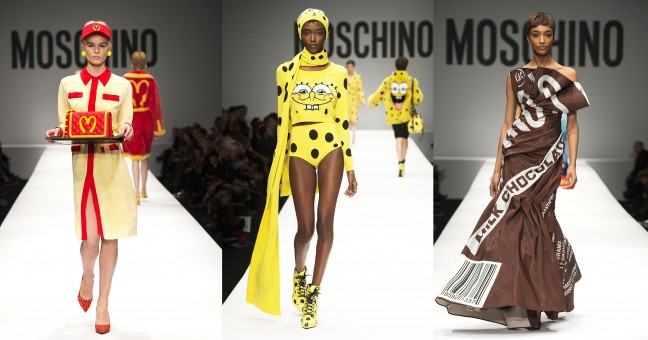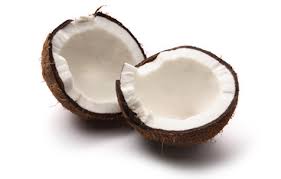On March 4th, 2014 Iggy Azalea released her music video for the song ‘Fancy’ (Director X, 2014) inspired by the 1995 American film Clueless (Amy Heckerling, 1995). The trailer depicts Azalea as Cher Horowitz (Alicia Silverstone), a Beverly Hills socialite, and features artist Charli XCX as her friend Tai Frasier (Brittany Murphy). After the release, the song went on to become Billboard’s ‘Song of Summer’ 2014 and the video has been viewed over 500 million times on YouTube. The re-enactment of Clueless within the video helps to promote the song into popular culture and forge the identity of Azalea.
Clueless has become a, “90’s cult classic” (Madden, S; 2014), therefore by choosing to re-create scenes from the film the song taps into an already established fandom that has made the film a part of their discourse. The recreation of key moments displays how culture is a, “process we participate in” (Takacs, S; 2015, p.3), as it rewards those who are able to make the connection to Clueless while educates those who don’t know its relevance. The clip uses nostalgia to gain interest and takes advantage of this vulnerability to fulfil it’s, “commercial agenda,” (Railton, D & Watson, P; 2011, p.2) for example, the electronic closet at the beginning of the video has ‘REVOLVE’ sprawled across the screen, the same name and font of an actual online store.
In the video Azalea uses the iconic character of Cher as a platform to build her own identity. Diane Railton and Paul Watson argue that our identity, “…is a product of our specific social, cultural and historical situation” (Railton, D & Watson, P; 2011, p.20); therefore by acting as Cher, Azalea situates the audience’s understanding of the character to develop herself. Through, “subtle changes,” such as the attitude she exudes in her body language when she struts down the corridor and the, “confiden[ce] and sex appeal,” she elicits when stretching at the tennis court, she establishes her existence as a rap music artist (Lyne, C; 2014). Therefore, this re-enactment is not just a, “wholehearted love letter to a titan of pop culture,” (Lyne, C; 2014) but a ploy that uses Clueless to gain worth and propel the product and artist into current popular culture.
References
Lyne, C 2014. ‘Clueless: the classic teen movie that continues to inspire,’ The Guardian (Film Section): http://www.theguardian.com/film/2014/mar/07/clueless-classic-teen-movie-iggy-azalea, March 2015.
Madden, S. ‘Iggy Azalea’s ‘Fancy’ Video Is Basically An Exact Replica of ‘Clueless’,’ MTV, 2014: http://www.mtv.com/news/1723476/iggy-azalea-fancy-charlie-xcx-clueless/, March 2015.
Railton, D & Watson, P 2011. ‘Music Video and the Politics of Representation,’ Edinburgh University Press, Edinburgh, pp.1-40.
Takacs, S 2015. ‘What is Popular Culture?’ (Chapter One), Interrogating Popular Culture: Key Questions, Routledge, New York, pp.1-17.


